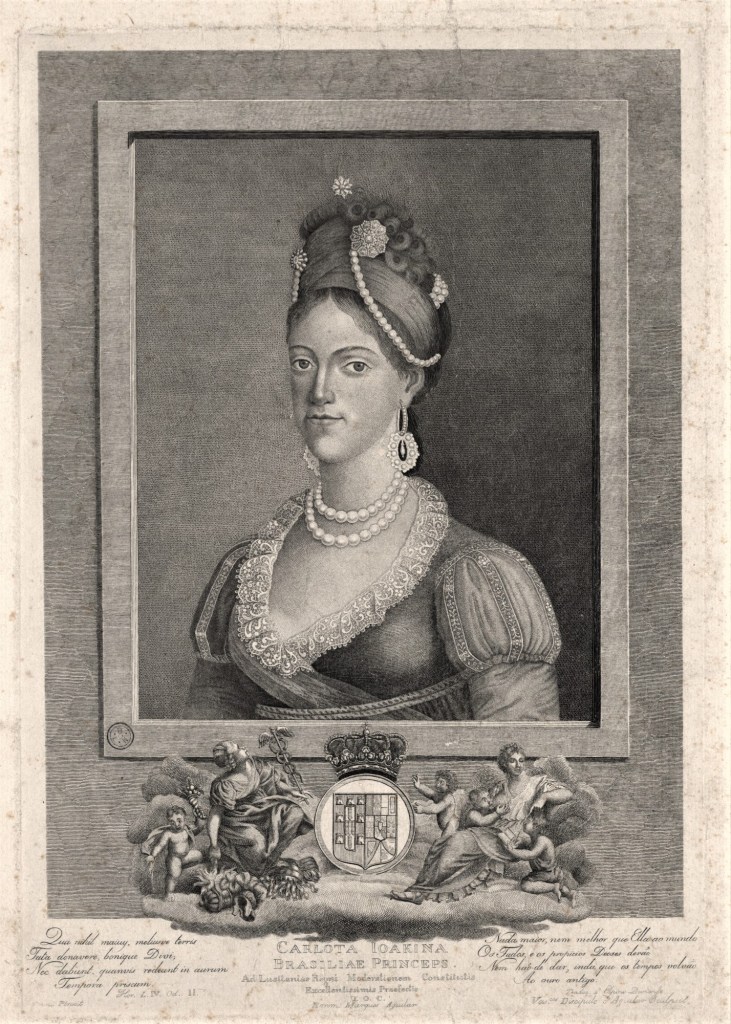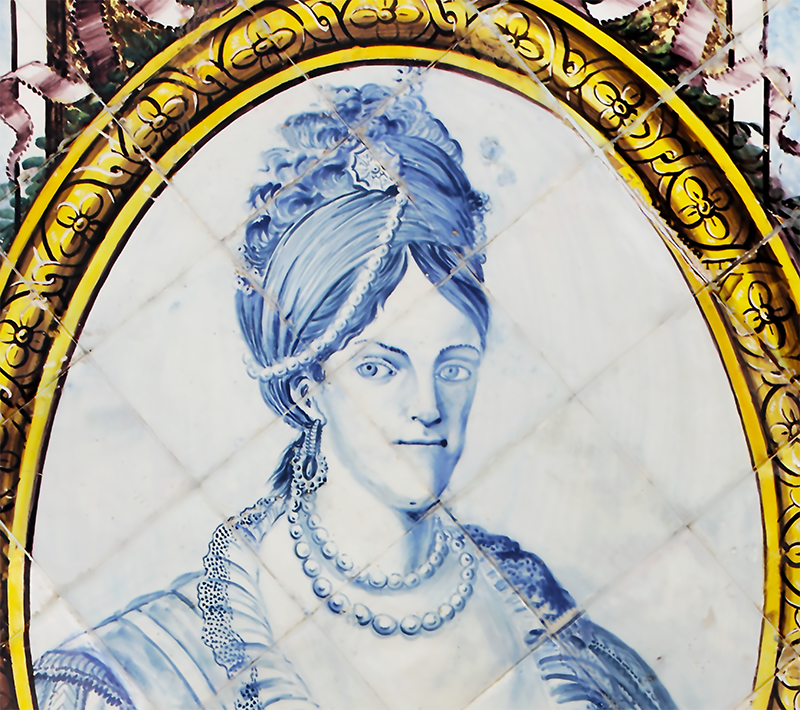In 1936, at the exhibition of Cerâmica Olisiponense, held by the Lisbon City Council, an extensive gallery of royal portraits in tiles was applied to the walls of the garden of the Galveias Palace, in Lisbon.
The restoration, carried out by the Cerâmica Constância Factory, during the transition between the direction of Leopoldo Battistini (1865-1936) and that of his disciple Maria de Portugal (1884-1971), involved the painting of the missing portraits, from the period that covers the reigns of D. João II to D. Afonso VI. As was usual, the chronological sequence omitted the Spanish monarchs, at the time of the union between the two crowns (1580-1640).
Without knowing the origin of the ensemble, the royal gallery brings together portraits of two different orders with a decade of difference, and the representations of Count D. Henrique and Princess D. Carlota Joaquina, made to the level of a staircase, exhibit quite different frames.

Both orders can be attributed to Francisco de Paula e Oliveira (act.1788-1825), potter, tile painter, and master of the Royal Tableware Factory, who made them from the series of incised engravings that constituted the official portraits. In the case of the Spanish princess, Paula e Oliveira strictly followed the print by J. Manuel Leitão de Vasconcelos, who in turn reproduces a portrait of the court painter Giuseppe Trono (1739-1810).
The modern Portuguese royal iconography begins with the work of the historian Friar Bernardo de Brito. In his work Elogios dos Reis de Portugal, he justified the need for the inclusion of the truthful portraits of the Portuguese monarchs, because there was an intimate relationship between physiognomic beauty and inner beauty that emanates from a virtuous character. The union of these two would be a demonstration of the reason why the royal family remained in power for more than five centuries:
I do even think it is convenient to add the portraits to the account of your ancestors because being the beautifulness an indication of the inner self, & as such, they deserved to govern. See the world how much time they had [the Portuguese Empire], for more than five hundred years without ever passing the crown to a strange generation.

The history kept the memory of the ugliness of Queen Carlota Joaquina, of a wanton life with numerous lovers, fame fed by the Portuguese Civil War (1828-1834), and her support for D. Miguel. The portrait as a princess of Brazil, with a lace collar, a pearl necklace and an exquisite hairstyle shows the importance of the regent before the threat of French invasions.
ESSENTIAL BIBLIOGRAPHY
MANGUCCI, Celso. Um novo padrão. A Fábrica-Escola de Louça do Rato 1767-1835. Lisboa: Museu de Lisboa, 2017.


